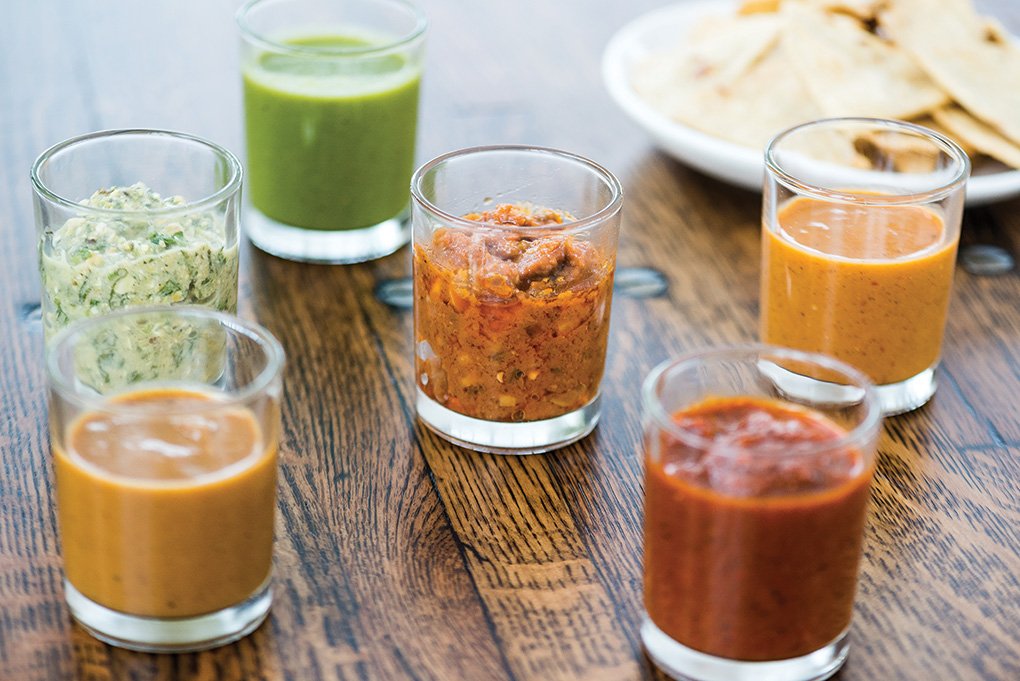Significant changes continue to shift the food industry in the United States—both foodservice and retail—as a result of Millennials. This is not just because the industry has chosen to focus on Millennials (roughly any consumer between the ages of 21 and 39) but, rather, because Millennials have focused so much on food as a critical part of their social, political and economic consciousness. So, although much has already been said about this influential demographic, it’s crucial to stay current with their evolving dining and flavor preferences.
Other age cohorts have, of course, incorporated food into their culture, from home entertaining in the ’50s to dining out in the ’80s. But no generation before the Millennials has placed such significance on food—from how it’s grown to how it’s manufactured or made, prepared, served and disposed.
Often, though, when consultants and industry pundits discuss trends, it can sound as though each trend exists in a bubble of its own making and is disconnected from other trends: Over here we have kale enjoying significant growth, and over there ancient grains increasing in penetration—and isn’t that nice for both of those product categories? But no trend exists in its own bubble. Every trend builds on other macro and micro trends.
The same is true of what we’ve seen from Millennials. Their influence has actually been a slow build over the last decade. So where are we now, and how did Millennials help us get here? How are things shifting again?

More than previous generations, Millennials approach food with a balanced perspective— that food should be enjoyed while taking into account its functional impact.
Conscientious Generation
Millennials, from an early age, are extremely values-driven. This is a strong reflection of their Boomer parents, who redefined what it meant to have a set of values drive not just personal behavior, but economic and social decisions. Millennials, whether consciously or subconsciously, vote with their dollars. Their dollars vote for or against industry products, behavior, beliefs and practices. The restaurants they visit and the foods they eat must reflect who they are and what they believe in. And make no mistake: This goes well beyond environmental friendliness and animal rights; it touches on fair trade, respectful workplaces, minimum-wage discussions, transparent sourcing and, increasingly, no-waste kitchens and manufacturing.
Millennials’ need to understand the values of the manufacturers and restaurants they support has led to a growing phenomenon: storytelling marketing. In truth, storytelling marketing has been around for a long time, but not to the extent that we’re seeing now. Nantucket Nectars employed this marketing strategy early on with labels that told the tale of selling drinks on the water from a tiny boat. This style of marketing not only conveys a strong sense of a company’s values, but it also humanizes that company for a generation that is inherently suspicious of big business. A corporate brand may seem devoid of any human connection, but the story of how an individual brought a product to market—perhaps with details of their experience when they were young—reaches people more readily.
To fill the perceived void of human-driven food companies and restaurants, Millennials—and Gen Xers springboarding off of the Millennial movement—entered the food industry in large numbers, starting independent food operations and small-batch manufacturing concerns. These operations and manufacturing businesses immediately lent themselves to great storytelling, and they created products that were unique and offered (at least in the beginning) in small markets. Other foodservice operators followed with on-site handcrafting, from condiments and sauces to bar mixers and charcuterie. In effect, these products and operations allowed Millennials to craft or customize their dining or eating experience to make it something far different than what was available broadly. It also helped set a benchmark of diner expectations.
A Custom Fit
Many small-batch manufacturers and independent operators began to customize the food experience on a small scale, but they soon broadened out. Suddenly, all aspects of the foodservice experience could be customized. The ability to not only customize orders but hyper-customize with nearly an endless array of options became the norm. Operations such as Blaze Pizza take a category like pizza—one of the first categories to really showcase customer choice—and blow that customization up into something new.
If the food could be customized, Millennials asked, why not the location? Why must great food only be available in traditional bricks-and-mortar restaurants? The answer: It doesn’t have to be. With that, we saw the rise of food trucks, which moved quality, unique food options to nearly anywhere—parks and beaches, parking lots and side streets. Pop-up restaurants, underground dining clubs and food halls all began redefining where great food could be produced and what that experience can look like. The grocerant—the combination of a grocery and restaurant—is the next stage of this evolution, to which Millennials are flocking in droves.

This generation is connected globallly, and it shows in preferences for dishes like this Walnut-Soy-Miso Tsukemen Bowl, created by Chef Trent Page at Google’s YouTube Cafés.
Our Shrinking World
Underpinning all of this has been technology and the influence of world cuisines. Technology has facilitated nearly every stage of this Millennial-led food evolution. Technology helped stories reach broader audiences, assisted smaller manufacturers and foodservice operations in launching more quickly and easily, and led patrons to off-the-beaten-path options. It’s changing the way food is ordered, paid for, customized, received and researched—and it will soon be changing the way it’s delivered, thanks to drones, robots and driverless cars.
As for world cuisines, it’s no surprise to anyone in the industry that we are experiencing the most significant impact of the broadest array of world cuisines in American food history. Korean, Filipino, Peruvian, Nordic, Indian, German and Middle Eastern cuisines—in addition to more “traditional” world cuisines including Italian, Mexican and Chinese—are being enjoyed in authentic formats and are changing the way we think about sandwiches, burgers, appetizers, desserts and more.
Going Casual
Perhaps the best and most pertinent example of how Millennials have left their indelible mark on the foodservice industry is the initial rise and continued success of the fast-casual segment. Certainly, other age cohorts enjoy the offerings and benefits of this segment, but no other segment in the industry has been as effective at leveraging and addressing the key demands of Millennials.
The fast-casual segment, nearly from start to finish, is the embodiment of Millennial drivers. Most of these operators engage in impactful storytelling marketing, from discussions on ethics, values and sourcing to sustainable practices, menu influences and waste management. Most fast-casual restaurants have focused on customization either at the item level or the meal level, allowing customers to create the meal and occasion that best suits them as individuals. Menus have been designed from a culinary point of view, focusing on quality above speed of preparation. Many also make items from scratch, or near scratch, on site. Operations have been designed to facilitate lingering and social interactions, and larger chains are trying hard to create distinctly un-chain-like atmospheres. Many of the newer arrivals to the fast-casual segment celebrate diverse world cuisines in both authentic and reimagined formats. These operators were early adopters of technology in ordering, menu displays, patron interaction—and they will likely be among the early adopters of next-generation delivery options.
Defining Health and Value
Yet another distinction when it comes to Millennials and food: This demographic has developed a new way to approach the issue of healthy or better-for-you consumption. In fact, those terms—which have been, to date, used effectively when discussing consumer behavior—may no longer be as relevant or as descriptive when it comes to Millennial priorities. This group is less likely than nearly any other to participate in diets. They appreciate that food should be enjoyed, but are far more aware of the functional impact of food. As a result, healthy eating is more about balance—indulgence combined with smart consumption—and focusing on the functional role of food in helping them achieve and perform throughout the day. As a result, we’ve seen protein, nutrients, fiber, produce and alternatives all enjoy much more interest than was the case with any other generation.
And finally, no discussion about Millennials is complete without touching on the impact of price. Some reports describe Millennials as less likely to spend money when dining out and as extremely cost-conscious, always wanting more for less. In part, this may have been true during and after the recession, given that this generation was harder hit than any other as they left college and tried to begin careers. However, Millennials are not only focused on cost or led by the price alone. Consider again the fast-casual segment. It’s true that this segment is less expensive than other full-service options, but it is decidedly more expensive than the fast-food segment, which has tried to drive traffic through extensive discounting over the past five to six years. It would be more accurate to say that this generation is about value. If the fast-casual segment proves anything, it’s that Millennials will pay more if you give them a reason to believe they are getting more for their money—and if you deliver on that promise.
Millennials have not reached the height of their spending power. In fact, many are only just beginning their careers. It’s unlikely food will become less important to this generation, so their influence on the foodservice industry—to either the benefit or detriment of various players—will continue over the next decade. How any operator or manufacturer best leverages the needs and demands of this generation will vary. As always, there is no one answer for all foodservice industry players, and the solution needs to reflect the goals, strategic position and focus of each. There are many opportunities still to be had with the Millennial demographic.










